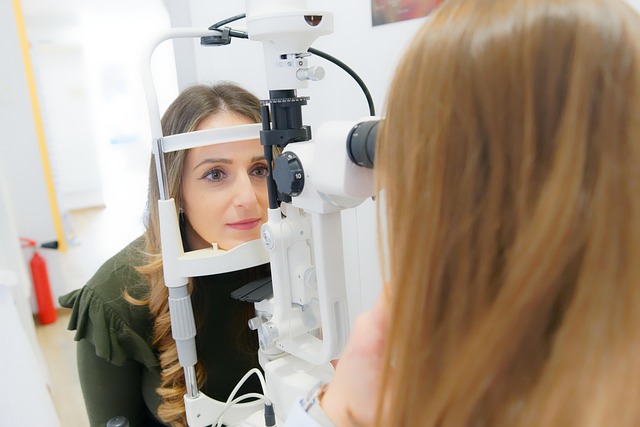Oxygen Machines for COPD: Choosing, Using, and Maintaining Supplemental Oxygen in the U.S.
Chronic Obstructive Pulmonary Disease (COPD) affects millions of Americans, making breathing increasingly difficult as the condition progresses. When COPD reduces the lungs' ability to deliver adequate oxygen to the bloodstream, supplemental oxygen therapy becomes essential for maintaining quality of life and preventing complications. Oxygen machines provide a reliable source of concentrated oxygen, helping patients breathe more easily and stay active. Understanding the different types of oxygen delivery systems, proper usage guidelines, and maintenance requirements can significantly impact treatment success and daily comfort for COPD patients across the United States.

The Role of Oxygen Therapy in COPD Management
Oxygen therapy serves as a cornerstone treatment for advanced COPD, particularly when blood oxygen levels consistently fall below normal ranges. Healthcare providers typically prescribe supplemental oxygen when arterial blood oxygen saturation drops below 88% or when oxygen partial pressure falls under 55 mmHg. This therapy helps reduce strain on the heart, improves sleep quality, enhances cognitive function, and increases exercise tolerance. Long-term oxygen therapy has been shown to extend life expectancy in COPD patients with severe hypoxemia. The therapy works by delivering concentrated oxygen directly to the lungs, compensating for the reduced efficiency of damaged lung tissue and ensuring vital organs receive adequate oxygen supply.
Types of Oxygen Machines and How They Function
Three primary types of oxygen machines serve COPD patients, each with distinct mechanisms and applications. Oxygen concentrators extract oxygen from ambient air, removing nitrogen through molecular sieve technology to deliver 87-95% pure oxygen. These electric devices require continuous power but eliminate the need for refills. Compressed oxygen tanks store pressurized oxygen gas in portable or stationary cylinders, providing pure oxygen on demand through pressure regulators. Liquid oxygen systems store oxygen in extremely cold liquid form, expanding into breathable gas as it warms, offering the highest oxygen purity and longest portable duration. Portable oxygen concentrators combine concentrator technology with battery power, allowing increased mobility while maintaining oxygen independence from traditional gas supplies.
Selecting the Right Oxygen Machine for Individual Needs
Choosing appropriate oxygen equipment depends on lifestyle requirements, prescribed flow rates, and mobility needs. Stationary concentrators work well for patients spending significant time at home, providing unlimited oxygen without refill concerns. Portable systems benefit active patients who travel frequently or maintain regular outdoor activities. Flow rate requirements vary from 1-6 liters per minute, with some patients needing higher flows during exercise or sleep. Battery life considerations affect portable device selection, with newer models offering 4-8 hours of operation on single charges. Weight factors matter for mobility, ranging from 2 pounds for ultra-portable units to 50+ pounds for stationary models. Physicians typically conduct comprehensive assessments including oxygen saturation monitoring, exercise testing, and lifestyle evaluations before recommending specific equipment types.
Usage Guidelines and Safety Tips for Oxygen Equipment
Proper oxygen machine operation ensures safety and therapeutic effectiveness while preventing equipment damage. Users must maintain prescribed flow rates consistently, avoiding unauthorized adjustments that could compromise treatment or waste oxygen supplies. Fire safety requires eliminating smoking, open flames, and heat sources within 10 feet of oxygen equipment, as concentrated oxygen significantly increases combustion risk. Regular equipment cleaning prevents bacterial growth and maintains optimal function, with filters requiring weekly cleaning or replacement. Backup oxygen supplies ensure continuity during power outages or equipment failures, particularly important for patients requiring continuous therapy. Travel considerations include airline regulations, prescription documentation, and advance notification requirements for commercial flights with medical oxygen equipment.
Insurance and Cost Considerations in the U.S.
Medicare Part B typically covers 80% of oxygen equipment costs when medical necessity criteria are met, requiring documented blood oxygen levels and physician prescriptions. Private insurance coverage varies significantly between providers, with some requiring prior authorization or specific supplier networks. Rental versus purchase decisions affect long-term costs, with Medicare generally covering rentals for initial 36 months before transitioning to patient ownership. Out-of-pocket expenses range from $50-400 monthly depending on insurance coverage, equipment type, and oxygen consumption rates.
| Equipment Type | Provider Example | Monthly Cost Range | Coverage Notes |
|---|---|---|---|
| Stationary Concentrator | Inogen, Philips Respironics | $50-150 | Medicare covers 80% after deductible |
| Portable Concentrator | ResMed, Invacare | $200-400 | Often requires supplemental insurance |
| Compressed Oxygen | Apria Healthcare, Lincare | $100-250 | Delivery costs may apply |
| Liquid Oxygen | National entities | $150-300 | Limited provider availability |
Prices, rates, or cost estimates mentioned in this article are based on the latest available information but may change over time. Independent research is advised before making financial decisions.
Optimizing COPD Care with Oxygen Machines
Effective oxygen therapy management requires understanding equipment options, proper usage techniques, and ongoing maintenance responsibilities. Success depends on selecting appropriate devices for individual lifestyles, following prescribed therapy guidelines, and maintaining regular communication with healthcare providers. As technology advances, newer portable systems offer increased freedom while maintaining therapeutic effectiveness. Patients benefit from working closely with respiratory therapists, equipment suppliers, and physicians to optimize oxygen delivery systems for changing needs. Regular equipment evaluations ensure continued effectiveness and may reveal opportunities for upgraded technology that enhances mobility and quality of life.
This article is for informational purposes only and should not be considered medical advice. Please consult a qualified healthcare professional for personalized guidance and treatment.




